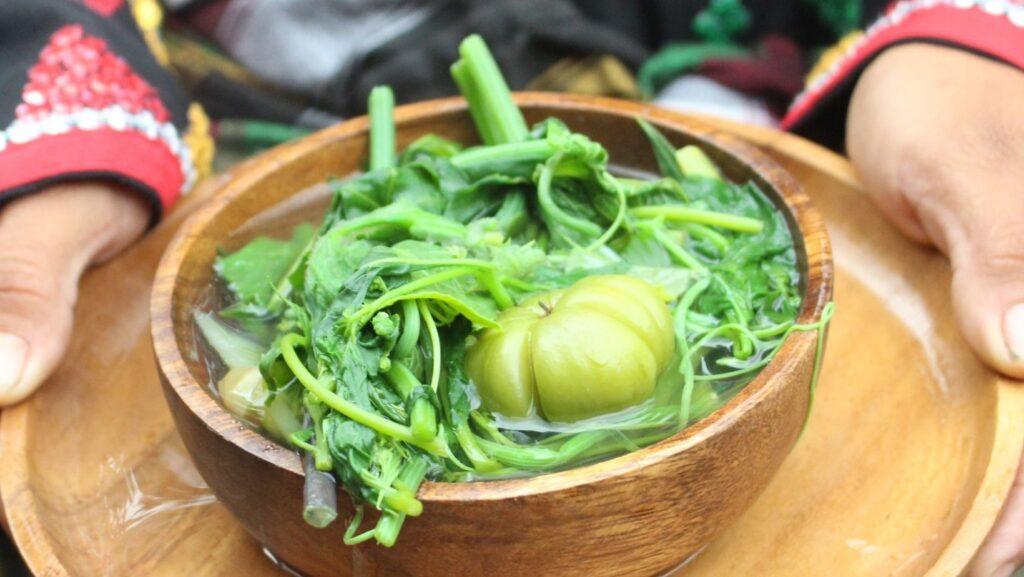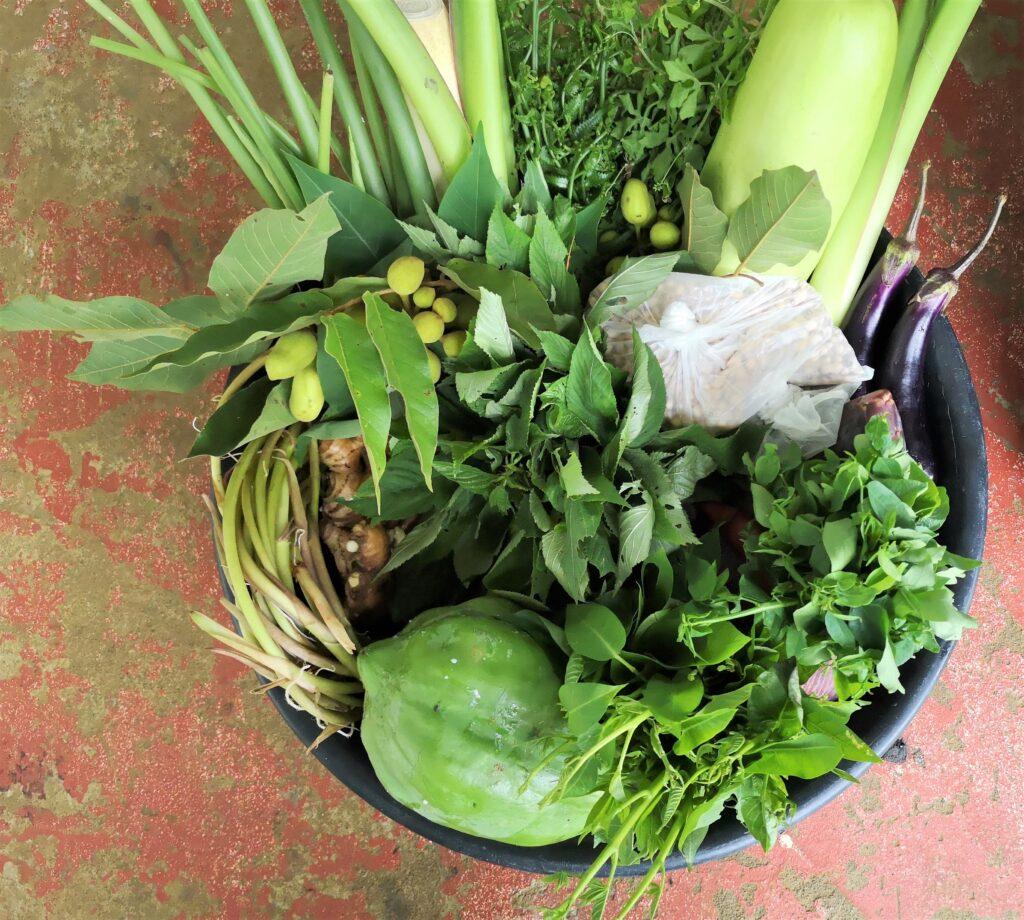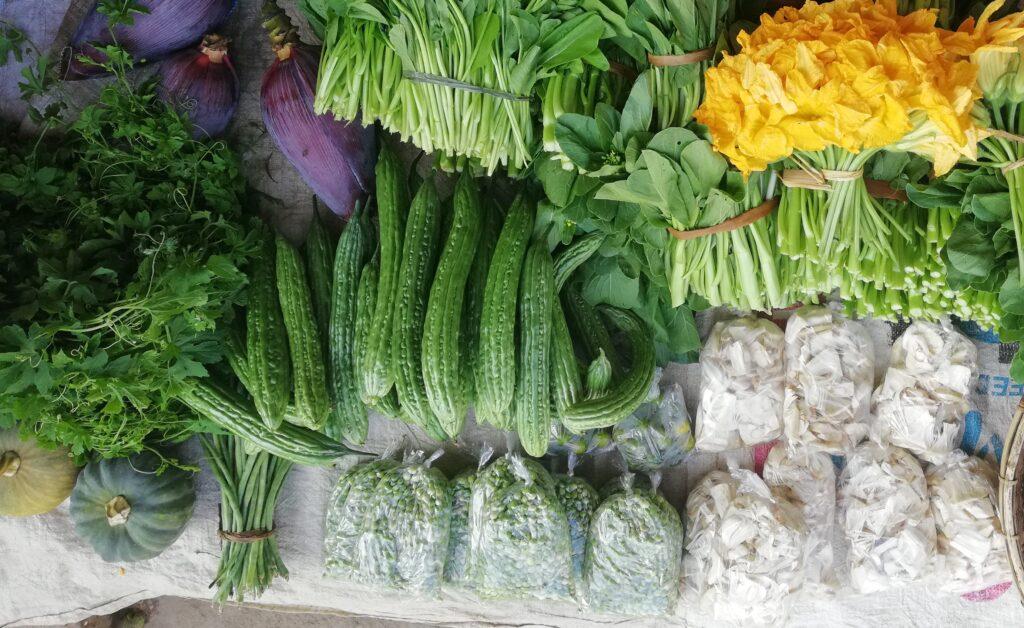
Food insecurity remains a pressing problem in the Philippines, exacerbated by natural and man-made disasters, rising prices of basic commodities, inaccessibility — and now, the COVID-19 pandemic.
Due to lockdown restrictions, more Filipinos, especially those in the poorest households, struggle to put food on their table. But a team of experts from the University of the Philippines Los Banos (UPLB) believe that indigenous vegetables — low-cost, nutrient-rich, and less damaging to the environment — can be a game-changer in food security.
Food insecurity amid the COVID-19 pandemic
To get “a snapshot of the food security situation and nutrition perceptions” of Filipinos during the pandemic, the Department of Science and Technology Food and Nutrition Research Institute (DOST-FNRI) conducted a survey among 7,240 individuals via phone interview. The results showed that 62.1% of households experienced moderate to severe food insecurity in March to November 2020.
Moreover, 56.3% of households had difficulties in accessing food citing the following reasons: lack of money due to job loss, limited public transportation, limited availability of stores, and age and mobility restrictions, among others. As a result, two out of 10 children lost weight during the period.
In order to get by, these families came up with food-coping strategies. The study showed that 71.8% of households purchased food on credit; 66.3% borrowed food from families and peers; 30.2% bartered food; and 21.1% reduced the food intake of adults so that children could have more to eat.
In terms of assistance, 96.6% of the surveyed households said that they received food assistance from the local government or the private sector. Meanwhile, 62.9% said that they received cash assistance. However, only 12.5% said that they received food production assistance from the government.
Indigenous vegetables: low-cost, low-maintenance, and nutrient-rich food sources
For decades, the country has been looking into a number of ways to address hunger. Public officials, government agencies, local and international scientists, research groups, corporations, industry leaders, experts, and all other persons of authority and influence have come up with multidisciplinary strategies to diminish the number of impoverished and starving Filipinos.
Documentation of Indigenous Vegetables in the Philippines, a recent project funded by the Philippine Council for Agriculture, Aquatic and Natural Resources Research and Development (DOST-PCAARRD), is one of the country’s latest initiatives to help address hunger and malnutrition.
Through this project, researchers from the UPLB College of Agriculture and Food Science (UPLB-CAFS) were able to document at least 145 indigenous vegetables from 20 provinces in the Philippines.
According to its briefer, its goal is to “document the interspecific and intraspecific diversity, utilization, maintenance, and seed supply of indigenous vegetables…with history of traditional production, utilization and consumption…or where there is potential.” It also indicated that all information gathered will be stored and maintained in a database for easier access and retrieval, and will be popularized through various media.
“It all started with an idea by DOST Secretary Fortunato dela Peña during a visit to the Asian Vegetable Research and Development Center in Taiwan. He realized that the Philippines is so rich in indigenous vegetables, but information on most of them is very limited and not systematically documented,” the project team told FlipScience.

Here are three of the 145 indigenous vegetables in the documentation:
Talbos ng kamoteng kahoy
Kamoteng kahoy is commonly grown in backyards. It can thrive in areas that are considered too poor for crop production including acidic soils, drought-prone conditions, as well as areas of high rainfall. It is rich in Vitamin A that is important for normal vision, strong immune system, and reproduction. This vegetable is also a good source of Vitamin C, which helps protect our cells for healthier skin and the growth and repair of body tissues.
The locals of Tayabas, Quezon call these vegetables “pakpak ng demonyo” or “demon wings” due to their shape and mix them with spices and coconut cream to come up with a dish called “ginataang pakpak ng demonyo.”
Alugbati
Alugbati is a herbaceous vine that can grow up to 6 meters. Farmers grow it in all regions in the country. A low-maintenance crop, it can thrive under high temperatures and light intensity, and can withstand large amounts of rainfall. Additionally, it is highly resistant against pests and diseases.
It is highly nutritious and is rich in fiber, Vitamin A, beta-carotene, and many other minerals. In Abra, locals blanch alugbati leaves and serve them with chopped tomatoes and bagoong to create “ginulay na alugbati.”
Puso at ubod ng saging
Just in case you don’t know it yet, banana is not a tree as it does not have woody parts; it is actually an herb. Grown in all parts of the country, it has two parts traditionally used as vegetables: the core (peduncle of the unemerged inflorescence) or ubod, and the bud or puso. Some also consider the fruits as vegetables, for culinary purposes.
Puso ng saging is a common vegetable extender in celebratory dishes like kare-kare, sinigang, dinuguan, and dinakdakan. Meanwhile, ubod ng saging is an important part of the culinary traditions of the Ivatan of Batanes, the Hiligaynon of Panay, the Bisaya, and ethnic groups in the north. Locals would tell you, though, that only select banana types are good sources of puso and ubod — saba included.

Indigenous vegetables as a solution to pandemic hunger
In August 2021, Metro Manila and other high-risk areas in the country were once again put under hard lockdown or Enhanced Community Quarantine — the third time since the COVID-19 pandemic began in March 2020.
The threats caused by these lockdowns have left Filipinos more vulnerable to hunger. The national and local governments, for their part, scramble to provide assistance to the poorest through cash aid or food packs composed mainly of meager amounts of rice and relief goods. Both solutions are short-lived and therefore unsustainable.
Dr. Lorna Sister, the project’s Information, Education, and Communication (IEC) leader, said that pandemic hunger could have been eased, if not prevented, had Filipinos not forgotten traditional diets or dishes. “We have become too dependent on commercial vegetables imported from elsewhere,” she said. “As the pandemic progressed, many did realize the importance of growing food at home, but still, we are far from truly recognizing many of our indigenous vegetables. Then, there is much work to be done in shifting tastes and preferences back to traditional dishes,” she added.
The DOST-funded documentation project may then be viewed as “a concrete step that the government took” to raise awareness and promote the use of indigenous vegetables as food sources, said Dr. Sister. “Without information, we would be hard-pressed to make plans for moving forward. It is important that what we have learned or rediscovered about these vegetables and their growing conditions reach as many Filipinos as possible.”
Areas for improvement
While this is a welcome effort from the government, the project team sees several areas policymakers can further act on. These include the allocation and preservation of spaces in populated areas for growing of vegetables that require little maintenance, as well as the development of value chains for indigenous vegetables. She explained that many of these food plants also have commercial/industrial potential aside from direct consumption.
“Pushing the envelope for what is closest to our hearts, we do hope that the government will provide more support and attention to the conservation of plant genetic resources for food and agriculture: supporting genebanks and also providing support/incentives to communities actively conserving and managing these resources,” the team said.
These include the provision of seed and planting materials for widespread use, conducting information campaigns on their conservation, management, use, and key benefits of germplasm or living genetic resources used in crop improvement, and initiatives to boost consumers’ regard for our indigenous vegetables.—MF
References
- Rapid Nutrition Assessment Survey, Department of Science and Technology
- Project Brief, Documentation of Indigenous Vegetables in the Philippines, Department of Science and Technology
- Ubod at Puso ng Saging. Indigenous Vegetables of the Philippines. No. 13/2019. ICropS-CAFS, UPLB, College, Laguna, Philippines.
- Alugbati. Indigenous Vegetables of the Philippines No. 15/2019. ICropS-CAFS, UPLB, College, Laguna, Philippines.
- Talbos ng Kamoteng Kahoy. Indigenous Vegetables of the Philippines No. 2/2018. ICropS-CAFS, UPLB. College, Laguna, Philippines.
Author: Jil Danielle Caro
Jil Danielle M. Caro is an Information, Tourism, Culture and Arts Officer at a local government unit. She is also working as a business and science journalist on the side.
She is a graduate of B.S. Development Communication from the University of the Philippines Los Banos and is about to pursue her Master of Arts degree in Philippine Studies at the University of the Philippines Diliman.









